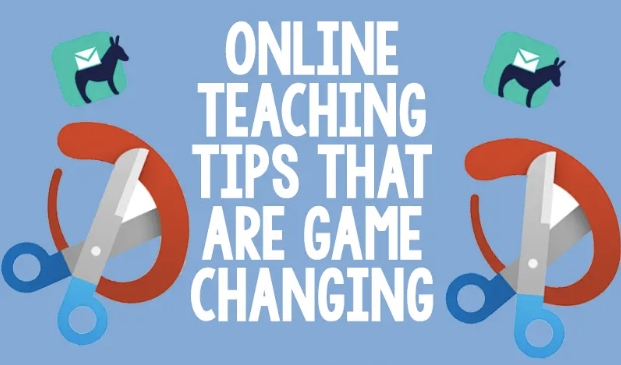- 1. Start Each Lesson with a Personal Check-In
- 2. Use Real-World Examples to Explain Concepts
- 3. Optimize Content for Online Learning
- 4. Leverage Multimedia Tools
- 5. Incorporate Game-Based Learning
- 6. Track Student Progress with Technology
- 7. Utilize Formative Assessments
- 8. Personalize Your Teaching
- 9. Foster a Strong Classroom Community
- 10. Offer Flexible Learning Paths
Have you ever thought about how to make your online teaching better? As more classes move to virtual spaces, it’s important to learn some online teaching tips. In this blog, we’ll look at practical ways to improve your teaching skills in the digital world. Let’s dive in and discover how to excel in online teaching!
Math & ELA | PreK To Grade 5
Kids see fun.
You see real learning outcomes.
Watch your kids fall in love with math & reading through our scientifically designed curriculum.
Parents, try for free Teachers, use for free
13 Online Teaching Tips for Educators
1. Start Each Lesson with a Personal Check-In

When you’re figuring out how to teach online, one of the best online teaching tips is to kick off every session with a quick personal check-in. Ask your students how they’re doing or if they have anything interesting to share.
This not only warms up the virtual classroom but also strengthens the bond between you and your students, creating a supportive and connected learning environment. It’s a simple yet effective tip for online teaching that makes students feel valued and ready to engage.
2. Use Real-World Examples to Explain Concepts
One of the top tips for online teaching is to anchor your lessons in the real world. By weaving real-world examples into your teaching, you make complex or abstract ideas more tangible and easier for students to grasp.
This method not only aids understanding but also shows students the relevance of what they’re learning, making the educational experience more meaningful. Whether it’s math, science, or literature, showing how concepts apply in real life can significantly enhance students’ comprehension and interest.
3. Optimize Content for Online Learning
It’s crucial to tailor your course material specifically for digital platforms. This means breaking down your lectures into shorter, more digestible pieces that fit the online medium perfectly.
Such structuring not only makes the learning process more manageable for students but also boosts their engagement and retention rates. This approach is one of the best online teaching tips for creating an interactive and engaging online course.
4. Leverage Multimedia Tools
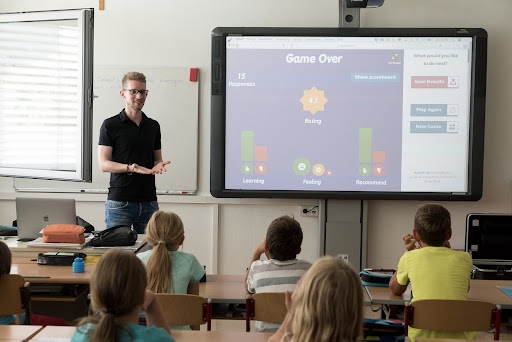
By integrating various types of content, such as instructional videos, podcasts, and interactive simulations, you cater to different learning styles and preferences. This diversity in teaching materials not only keeps the course interesting but also helps in conveying complex concepts more clearly, ensuring that your students remain hooked and learn effectively.
Related Reading: Best Innovative Tech Tools for Teachers
5. Incorporate Game-Based Learning
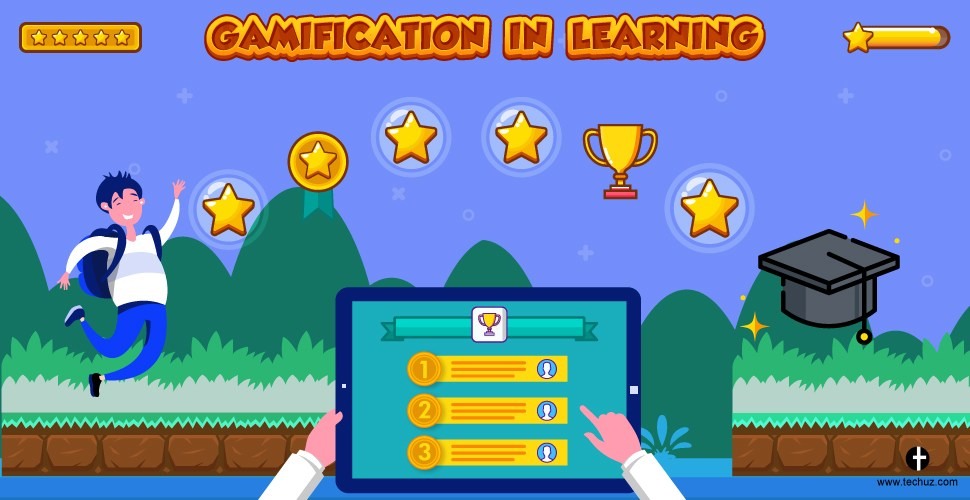
Game-based learning is a powerful strategy to boost student engagement and motivation. Platforms like SplashLearn take this to the next level by transforming math and reading lessons into interactive games. This method not only makes learning more enjoyable but also allows students to understand and apply complex concepts in a fun, engaging environment. SplashLearn’s curriculum-aligned games ensure that while students are having fun, they’re also receiving a quality educational experience.
6. Track Student Progress with Technology
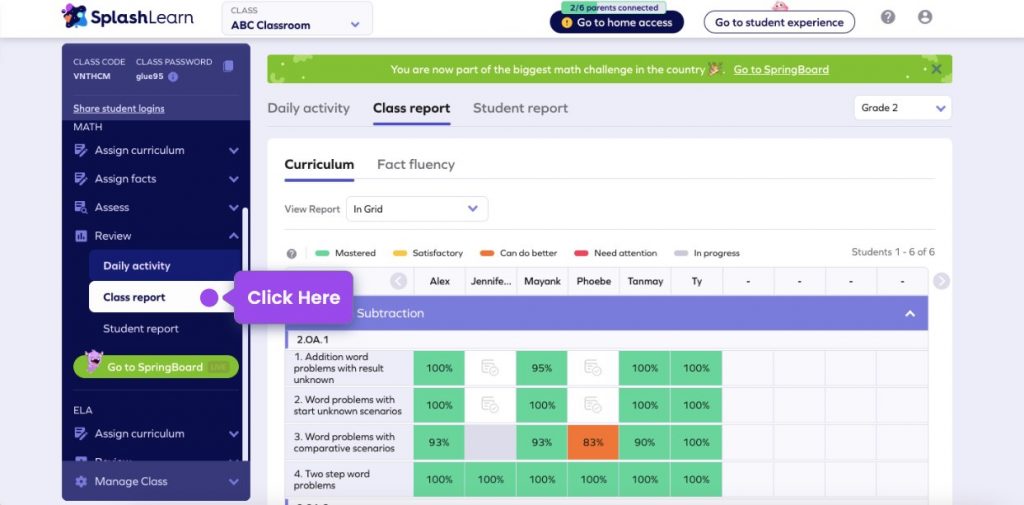
In today’s digital age, tracking student progress has become more straightforward and efficient with technology. SplashLearn offers a robust platform where educators can monitor their students’ progress in real-time. This feature is incredibly beneficial for identifying students who may be struggling with certain topics, allowing educators to provide targeted support promptly.
Additionally, the platform facilitates the provision of timely feedback, enabling educators to quickly address students’ questions and assignments, further enhancing the learning experience. SplashLearn’s detailed reports and analytics make it easier to customize teaching strategies to meet the individual needs of each student, ensuring that every learner receives the attention and guidance they need to succeed.
7. Utilize Formative Assessments
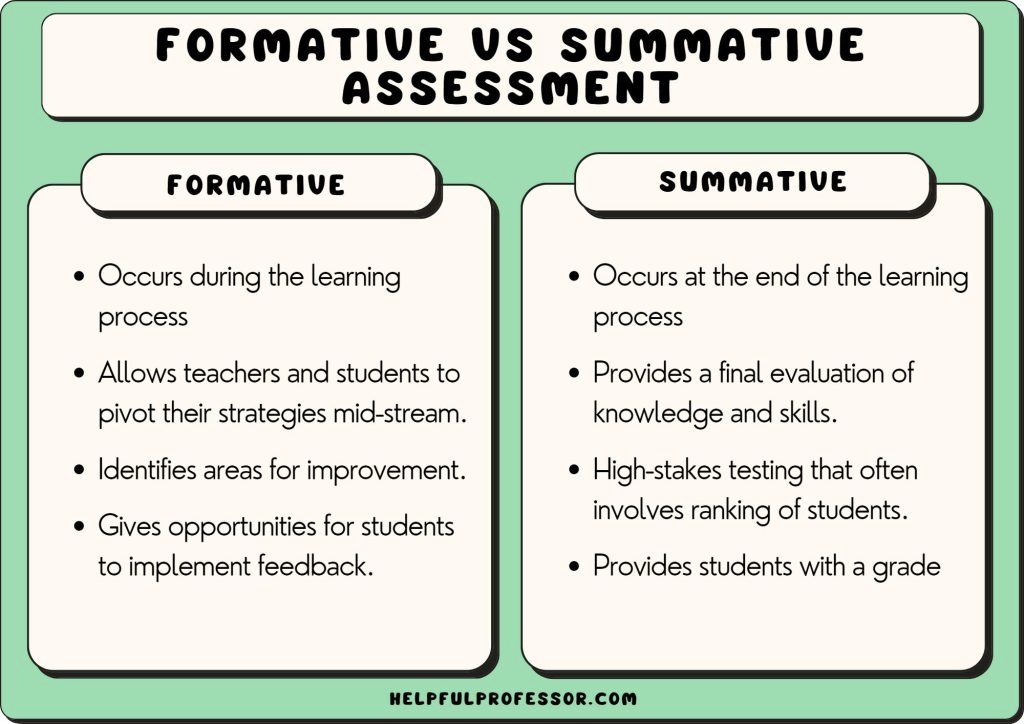
Regularly integrating formative assessments like quizzes, reflection journals, or discussion prompts is crucial. These tools offer immediate feedback to students, helping you identify areas where they might be struggling. Early intervention can then be made to address these issues. It’s one of the most impactful online teaching tips and techniques, ensuring that the learning process is continuous and adaptive to student needs.
Related Reading: Types of Assessments [And How to Design & Deploy Them]
8. Personalize Your Teaching
Leveraging data and analytics from your Learning Management System (LMS) is among the top online teaching tips for tailoring your approach to each student’s unique learning journey. By understanding each student’s progress, strengths, and areas for improvement, you can adjust your teaching methods to meet their individual needs, making teaching online a more personalized and impactful experience.
9. Foster a Strong Classroom Community
Creating a welcoming and inclusive online environment is crucial for building a strong classroom community. Start with ice-breaker activities, encourage ongoing group discussions, and facilitate peer feedback sessions. These strategies not only make students feel more connected but also enhance their learning experience.
10. Offer Flexible Learning Paths
One of the best ways to teach online classes is by offering flexible learning options. Allow students to dive deeper into subjects with additional resources, choose their assignment topics, or participate in optional discussions. This approach empowers students to take charge of their learning, making education more relevant and engaging for them.
11. Stay Updated on Online Teaching Practices
Continuously seeking professional development and staying abreast of the latest online teaching tools, trends, and methodologies are vital online teaching tips for educators. By dedicating yourself to lifelong learning, you ensure that your teaching strategies remain effective and innovative, providing your students with the highest quality online education possible.
Related Reading: What is Teachers Professional Development: Strategies & More
12. Use Student Feedback to Adjust Teaching Methods
A crucial tip for teaching online classes is to actively seek and use student feedback. Asking your students how they feel about the teaching methods and materials gives you invaluable insights. Be ready to adapt and change your strategies based on what they tell you. This approach ensures that the learning experience is continuously improving, making it more engaging and productive for your students.
13. Promote a Growth Mindset
Encouraging a growth mindset is fundamental in teaching online effectively. Motivate your students to see challenges as opportunities to learn and grow. Remind them that effort leads to improvement and mastery over time. Celebrating their progress and efforts, instead of focusing solely on the outcomes, helps build resilience and a love for learning. This strategy is not just a tip for teaching online classes; it’s a powerful approach to education that empowers students to become lifelong learners.
Related Reading: Best Hands-On Growth Mindset Activities for Kids
Pros and Cons of Online Teaching
Online lessons are accessible but come with their own challenges. Successful online learners are organized, self-motivated, and manage their time well. While some students thrive, others may struggle. Here is a quick outline of the advantages and disadvantages of teaching online.
| Pros | Cons |
|---|---|
| Flexibility in Scheduling: Online teaching offers flexibility for both teachers and students to manage their schedules, making education more accessible to a wider audience. | Lack of Personal Interaction: The physical distance in online teaching can lead to a lack of direct personal interaction, which might affect student engagement and motivation. |
| Access to a Global Classroom: Students from anywhere in the world can join the class, providing a diverse learning environment. | Technology Dependence: Online teaching relies heavily on technology, which can be a barrier for students and teachers with limited access or technical issues. |
| Innovative Teaching Tools: Teachers can use a variety of digital tools to enhance the learning experience, making lessons more interactive and engaging. | Self-Discipline Requirement: Online learners often need a higher degree of self-discipline to keep up with their studies, which can be challenging for some. |
| Cost-Effectiveness: Online courses can reduce the need for physical materials and commute, potentially lowering education costs for students. | Screen Time Concerns: Increased screen time is a common concern, potentially impacting students’ health and well-being. |
| Customizable Learning Experiences: Online platforms often allow for a personalized learning experience, catering to individual student needs and learning styles. | Assessment and Cheating Concerns: Ensuring the integrity of assessments online can be challenging, with concerns over cheating and authenticating student work. |
Conclusion
Embracing these teaching tips for online teaching can make a significant difference in your digital classroom. By incorporating student feedback, fostering a growth mindset, and adapting your teaching methods, you’re not just teaching online effectively; you’re also creating a supportive and dynamic learning environment where every student has the opportunity to thrive and succeed.
Related Reading: Best Websites for Teachers
Frequently Asked Questions (FAQs)
What is the biggest challenge in online teaching?
The biggest challenge in online teaching is maintaining student engagement and motivation in a virtual environment, where physical cues and in-person interaction are limited. Overcoming this requires creative teaching strategies and effective use of digital tools.
Is online teaching stressful?
Yes, online teaching can be stressful, especially when adapting to new technologies, managing student engagement remotely, and balancing the demands of online lesson planning. However, with proper support and resources, this stress can be managed effectively.
Why online teaching for teachers?
Online teaching offers teachers flexibility in scheduling, the ability to reach a broader audience, and opportunities to utilize innovative teaching tools and techniques. It also challenges educators to continually adapt and improve their teaching methods, enhancing their professional growth.

















